Myanmar Green Coffee Manor (Green Land) introduces Burmese Cup Test Champion Coffee beans
Green Coffee Manor (Green Land) has an extensive coffee garden and is the representative of coffee production in Myanmar today. Greenland Manor was awarded the Outstanding Coffee cultivation Certification (Outstanding Coffee Growing Certificate) of the Food and Agriculture Organization of the United Nations (Food and Agriculture Organization of the United Nations, FAO) in 2003. Greenland Manor not only produces the highest quality alpine Arabica coffee beans in Myanmar, but also helps local coffee farmers bring their products to market. In addition, its coffee beans won the championship at the Myanmar National Cup Test Conference (Myanmar National Cupping) supervised by the American Fine Coffee Association (SCAA) and the Coffee quality Association (CQI) in 2016 with an eye-catching 87 points.
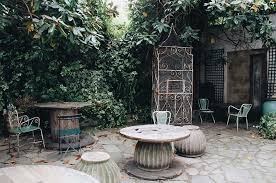
Coffee beans and Coffee Garden
Located above 1100 meters (3300 feet) above sea level, Greenland Coffee Manor covers a vast area. Costa Rica T8667 (Costa Rican T8667) and Kenyan SL-34 bourbon species (Kenya-derived SL-34) coffee trees grow and thrive in the shade of lush silver oaks. T8667, which originated in Portugal, is a hybrid of Timo and Kaddura. This breed of coffee was grown in Costa rica before it was introduced into Myanmar. T8667 is known for its excellent leaf rust resistance, high yield, large fruit and good cup test results. OGS recently tested coffee beans harvested in 2016 and found that the coffee beans have herbal, cream, lemon tea and blackcurrant flavors as well as good acidity and sweetness. SL-34 is a coffee variety selected by the French Missionary Society and cultivated in the Scott Laboratories laboratory in Kenya in the mid-1900s. It also has a reputation for decay resistance, large fruit and high quality cup testing.
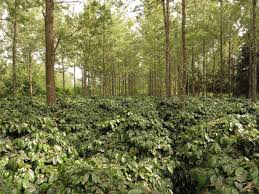
Silver oak can not only filter out sunlight and protect coffee trees from strong winds, but also maintain soil moisture. Fallen leaves are also an important source of micronutrients for coffee trees, which is why the crops in green coffee farms are full of life. The SL-34 variety in the coffee garden has an excellent flavor, with a hint of spices and blackcurrant aromas, smooth in the mouth, not only with mild lemon acidity, but also a refreshing finish.
High quality coffee depends on good handling procedures.
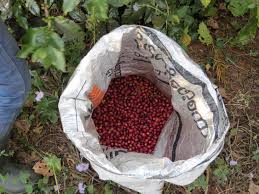
The experienced Burmese coffee picking team bends into the thick trees and carefully picks the coffee cherries to be processed by hand, and only the red ripe cherries will be picked, while the immature cherries will be picked separately. During the harvest process, the fruit is carefully bagged and then transported to the processing center of the coffee manor. the peel and pectin of the coffee cherry are removed, and then the peeled coffee beans are soaked in a fermentation tank for 24 hours.
Coffee beans placed in the fermentation tank will naturally ferment and decompose the carbohydrates in cherry pectin. Coffee beans must rest for 24 hours before being washed for a second time. The washing process will further remove all sticky pectin, which can greatly reduce the problems that may occur during the drying process. After that, put the coffee beans on a wide cement dry ground for the sun, and rake the Green Land coffee beans on the rack several times a day to ensure that all coffee beans are evenly dry. This action not only prevents mildew, but also contributes to the consistency of the flavor during the coffee harvest.
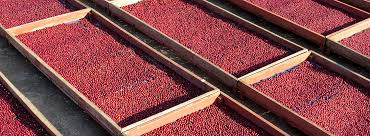
When the coffee bean is dried to an appropriate water content of 10-13%, the coffee bean is packed in bags and placed for at least 1 month before milling to remove impurities such as the outer skin of the shelled coffee bean.
Important Notice :
前街咖啡 FrontStreet Coffee has moved to new addredd:
FrontStreet Coffee Address: 315,Donghua East Road,GuangZhou
Tel:020 38364473
- Prev
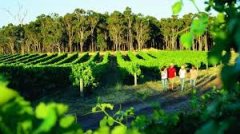
Hope that Marguerite Manor, one of the four major manors, will be introduced to Marguerite in summer.
For the exchange of professional baristas, please follow the Coffee Workshop (Wechat official account qianjiecoffee) Columbia Hope Manor Margaret Geisha / Rose Summer Sun treatment Flavor description: dry aromas of flowers, wine, oranges, cup aromas of flowers, mango, pineapple, wine, lemon caster, guava, mint chocolate, body solid. I hope the manor has a total of four estates.
- Next
The Blue Mountain Coffee Manor in Myanmar is worthy of the name of the same name as the Blue Mountain in Jamaica.
Blue Mountain Coffee Manor is located on a scenic steep slope of 1200 1400 meters above sea level, with an aerial view of the town of Wulun (Pyin Oo Lwin). The surrounding scenery is as famous as the award-winning gourmet coffee of the same name. Its coffee beans are mixed beans of three varieties: SL-34 bourbon from Kenya, natural hybrid S795 from India and Lanshan with low yield. S from India
Related
- Does Rose Summer choose Blue, Green or Red? Detailed explanation of Rose Summer Coffee plots and Classification in Panamanian Jade Manor
- What is the difference between the origin, producing area, processing plant, cooperative and manor of coffee beans?
- How fine does the espresso powder fit? how to grind the espresso?
- Sca coffee roasting degree color card coffee roasting degree 8 roasting color values what do you mean?
- The practice of lattes: how to make lattes at home
- Introduction to Indonesian Fine Coffee beans-- Java Coffee producing area of Indonesian Arabica Coffee
- How much will the flavor of light and medium roasted rose summer be expressed? What baking level is rose summer suitable for?
- Introduction to the characteristics of washing, sun-drying or wet-planing coffee commonly used in Mantenin, Indonesia
- Price characteristics of Arabica Coffee Bean Starbucks introduction to Manning Coffee Bean Taste producing area Variety Manor
- What is the authentic Yega flavor? What are the flavor characteristics of the really excellent Yejasuffi coffee beans?

